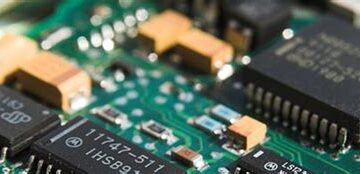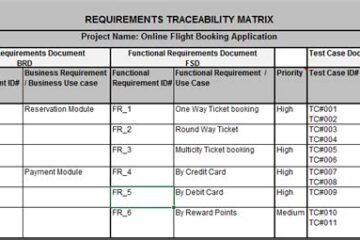The Importance of DFM and DFA in PCB Design
Design for Manufacturability (DFM) and Design for Assembly (DFA) are crucial aspects of PCB design that can significantly impact the cost, quality, and time-to-market of electronic products. By adhering to DFM and DFA principles, designers can create PCBs that are easier to manufacture and assemble, reducing the likelihood of defects, delays, and additional costs.
DFM focuses on optimizing the PCB design to ensure that it can be efficiently and reliably manufactured using standard processes and equipment. This includes considerations such as:
- Selecting appropriate materials and finishes
- Defining proper trace widths and spacings
- Incorporating adequate clearances and tolerances
- Avoiding complex or non-standard features
On the other hand, DFA aims to simplify the assembly process by designing PCBs that are easy to populate with components and test for functionality. Key aspects of DFA include:
- Choosing components with compatible packaging and footprints
- Placing components in a logical and accessible manner
- Providing clear markings and polarity indicators
- Incorporating test points and other features to facilitate testing
By carefully considering both DFM and DFA during the design phase, engineers can create PCBs that are not only functional but also cost-effective and reliable to manufacture and assemble.
Key Updates to RayMing Electronics’ DFM and DFA Guidelines
RayMing Electronics’ updated DFM and DFA guidelines incorporate the latest industry standards and best practices to ensure that PCB designs are optimized for modern manufacturing and assembly processes. Some of the key updates include:
Expanded Material and Finish Options
The updated guidelines provide a comprehensive overview of the various PCB materials and finishes available, along with their properties, advantages, and limitations. This information can help designers select the most appropriate materials and finishes for their specific applications, taking into account factors such as cost, performance, and environmental requirements.
Enhanced Trace and Spacing Recommendations
RayMing Electronics has refined its recommendations for trace widths and spacings based on the latest manufacturing capabilities and industry standards. The updated guidelines provide detailed tables and illustrations to help designers determine the optimal trace dimensions for different signal types, copper weights, and layer counts, ensuring that PCBs can be reliably manufactured while maintaining signal integrity.
Improved Component Placement and Orientation Guidance
The updated DFA guidelines include expanded recommendations for component placement and orientation, taking into account factors such as component size, package type, and thermal considerations. By following these guidelines, designers can create PCBs that are easier to assemble and less prone to defects, such as tombstoning or bridging.
Advanced Testing and Inspection Considerations
RayMing Electronics has incorporated the latest testing and inspection technologies into its updated guidelines, providing designers with recommendations on how to incorporate features such as test points, fiducials, and barcode markings to facilitate automated testing and inspection processes. By designing PCBs with these considerations in mind, manufacturers can identify and address potential issues early in the production process, reducing the risk of costly rework or delays.
Applying DFM and DFA Guidelines to Your PCB Design
To effectively apply RayMing Electronics’ updated DFM and DFA guidelines to your PCB design, consider the following steps:
-
Familiarize yourself with the guidelines: Thoroughly review the updated guidelines to understand the key principles and recommendations for PCB design, manufacturing, and assembly.
-
Collaborate with your manufacturing partner: Engage with RayMing Electronics early in the design process to discuss your specific requirements and ensure that your PCB design aligns with their capabilities and guidelines.
-
Use design tools with DFM and DFA checks: Employ PCB design software that incorporates DFM and DFA checks to automatically validate your design against the guidelines and identify potential issues.
-
Conduct regular design reviews: Schedule periodic design reviews with your team and manufacturing partner to assess your PCB design’s compliance with DFM and DFA guidelines and address any concerns or improvements.
-
Prototype and test: Develop prototypes of your PCB design and conduct thorough testing to validate its manufacturability, assembly, and functionality, making any necessary adjustments based on the results.
By following these steps and adhering to RayMing Electronics’ updated DFM and DFA guidelines, you can create PCB designs that are optimized for efficient manufacturing and assembly, ultimately leading to higher-quality, more reliable electronic products.

The Benefits of Partnering with RayMing Electronics
Partnering with RayMing Electronics for your PCB fabrication and assembly needs offers numerous benefits, including:
- Access to state-of-the-art manufacturing facilities and equipment
- Expertise in a wide range of PCB technologies and applications
- Stringent quality control and testing processes
- Rapid prototyping and full-scale production capabilities
- Competitive pricing and lead times
- Exceptional customer support and technical assistance
By leveraging RayMing Electronics’ updated DFM and DFA guidelines and extensive experience in PCB manufacturing and assembly, you can streamline your design and production processes, reduce costs, and bring your products to market faster and with greater confidence.
Frequently Asked Questions (FAQ)
- What are DFM and DFA, and why are they important in PCB design?
-
DFM (Design for Manufacturability) and DFA (Design for Assembly) are principles that guide PCB designers in creating boards that are optimized for efficient manufacturing and assembly. By adhering to DFM and DFA guidelines, designers can reduce the likelihood of defects, delays, and additional costs while improving the overall quality and reliability of their electronic products.
-
How can I access RayMing Electronics’ updated DFM and DFA guidelines?
-
RayMing Electronics’ updated DFM and DFA guidelines are available on their website for easy access and reference. Simply visit the company’s website and navigate to the resources section to download the latest version of the guidelines.
-
What are some key considerations when applying DFM and DFA principles to my PCB design?
-
Some key considerations when applying DFM and DFA principles include selecting appropriate materials and finishes, defining proper trace widths and spacings, incorporating adequate clearances and tolerances, choosing components with compatible packaging and footprints, placing components in a logical and accessible manner, and incorporating test points and other features to facilitate testing and inspection.
-
How can partnering with RayMing Electronics benefit my PCB design and production process?
-
Partnering with RayMing Electronics offers access to state-of-the-art manufacturing facilities, expertise in a wide range of PCB technologies, stringent quality control and testing processes, rapid prototyping and full-scale production capabilities, competitive pricing and lead times, and exceptional customer support and technical assistance. By leveraging these benefits and adhering to RayMing Electronics’ updated DFM and DFA guidelines, you can streamline your design and production processes, reduce costs, and bring your products to market faster and with greater confidence.
-
What should I do if I have questions or need assistance with applying RayMing Electronics’ DFM and DFA guidelines to my PCB design?
- If you have questions or need assistance with applying RayMing Electronics’ DFM and DFA guidelines to your PCB design, simply reach out to the company’s customer support team or your assigned sales representative. They will be happy to provide guidance and technical assistance to ensure that your PCB design is optimized for manufacturing and assembly success.
In conclusion, RayMing Electronics’ updated DFM and DFA guidelines provide a comprehensive and invaluable resource for engineers and designers looking to optimize their PCB designs for efficient manufacturing and assembly. By partnering with RayMing Electronics and adhering to these guidelines, you can create high-quality, reliable electronic products while reducing costs and time-to-market.



0 Comments